With the advent of mobile apps, Software as a Service (SaaS), Infrastructure as a Service (IaaS), Platform as a Service (PaaS), Cloud storage and computing (Cloud), and Security as a Managed Service (SaaMS), what are the strategic business reasons to justify an IT organization?
Consider that the different business functional groups have been chipping away at the IT leadership roles for years with the introduction of IT roles inside their functional teams such as VP/Director of FP&A (information and analytics), Digital (an IT role coming out of Marketing), Director HRIS (out of HR), Chief Data Officer (CDO reporting to compliance), etc. So, why do companies need a formal IT organization anymore?
There, I said it!
As McKinsey proposed years ago; May 2003 https://hbr.org/2003/05/it-doesnt-matter, is IT really irrelevant this time? We have heard it before from large IT consulting firms with their promise to help you do or fix everything in IT, with all their challenges, for less money than doing it yourself. Now they have SaaS, AWS, Azure, Agile, DevOps, AI, ML, IoT, and other buzzwords to help put IT out of business.
If IT is not relevant as a central group, is the IT Department a dead functional group? If IT is dead, are we in the middle of the Zombie Apocalypse and nobody seems to know or care that this once critical organization is failing to be strategically useful? Stated in healthcare terms, Is IT the Appendix of business functions: once perceived to be useful but nobody knows what it does anymore?
Consider what IT organizations should be doing today to help the business.
Technology that can differentiate the customer experience
Technology that simplifies the back office processes which improve the customer experience
Advances in data capture and organization to allow for innovative analytics to help drive marketing campaigns
Customer insight and analytics
Technical innovation
New Product/Service innovation
Consistency in the customer experience with technology for a given company
Technology Procurement/technology contracts
Technology Setup
Desktop, laptop, tablet, mobile phone configuration
System integration configuration
Infrastructure configuration
Network configuration
Custom Application Development
Technical Support
Desktop, laptop, tablet, mobile phone problem management & support
Infrastructure problem management & support
Network problem management & support
Custom Application problem management & support
Telecommunications management (phone, email, etc.)
Data AND Information Management
Reporting
Electronic document/record management
Data security
Management of enterprise platforms, such as CRM, ERP, and EMR systems
However, as organizations consolidate services and centralize teams to increase efficiency, they are also giving functional groups more technology autonomy to increase flexibility and speed to market. Coupled with the need to be virtual and support employees, partners, and customers anywhere, including their homes, we start to see that less work is needed internally than ever before.
Many businesses are realizing that their operations and HR teams are separate and so too are their computer systems. As functional leaders look around the enterprise, they realize that technology integration of data is more manual than ever before as well. This realization coupled with the ability for business leaders to lease software, hardware and storage and lock down data better and faster externally, than they can using the legacy IT department, and you have an environment of organizational change that is unstoppable.
More Chief Data Officers are reporting to CEO, P&L or geographical Presidents with only 16% reporting to the CIO as a result of global data privacy laws
They own data management, reporting and document/record management (in partnership with other business leaders)
More Chief Digital Officers are reporting to Marketing or the CEO directly
They own all the new technology connecting to social media and leading into big data.
They partner with risk, customer and other business groups for analytics.
They assume ownership of all mobile devices and software that should connect to social medial data platforms, search engines, and directly to customers.
The shift removes more and more telecommunications, software, process enablement, and operations management from IT with each passing day.
More Procurement groups are reporting to the Chief Financial Officer (CFO)
Legacy CIOs had no formal power to stop purchasing by other functional leaders as budgets were separate.
All spending are being moved back into or reviewed and approved by Finance for tighter controls.
Buying IT software and hardware now requires most IT groups to go through a toll both in Finance (procurement, sourcing or strategic sourcing teams)
Nearly all Chief Information Security Officers are reporting to the head of compliance, legal or directly to the CEO
For legal reasons, this was moved out of IT years ago
CISO are owning more data and information privacy work, systems, structures, architectures, hardware, and even approval before production deployments
CRM is owned more and more by the leader of sales or marketing
They own the use, requirements, value, and budget of these systems and many are renting SaaS solutions and cutting IT 100% out of the discussion
ERP is owned more and more by the leader of Manufacturing, Operations, Supply Chain, or Finance depending on the culture
They own the use, requirements and value of these systems and many are renting SaaS or cloud-based solutions and cutting internal IT 100% out of the discussion as well
P&L leaders are finding more companies to provide SaaS applications that are flexible enough to meet their needs or custom application developers that work closely with cloud companies to cut IT out of the discussion until interfaces are needed to connect systems together.
The only areas left from the original list above include only the following:
Technology Setup
Desktop, laptop, tablet, mobile phone configuration
System integration configuration
Infrastructure configuration
Network configuration
Custom Application Development
Technical Support
Desktop, laptop, tablet, mobile phone problem management & support
Infrastructure problem management & support
Infrastructure problem management & support
Network problem management & support
Custom Application problem management & support
As more business areas take on the strategic areas of IT, the only thing that remains is essentially an Employee/ Enterprise technical Service Desk (ESD).
If you agree that the strategic areas of IT are being taken over by other functional groups and that will continue with new apps, services and offerings from other companies, you should be asking if IT is worth keeping separate. Are the remaining functions within IT a set of business differentiators as they have been for 30 years or are they utilities driven by a sense and respond need of those other business groups?
As companies ask themselves how they should organize around service models or capability models, where do the IT utility services live inside the business structure if they are “sense and respond” Service Utilities (SU)? The SUs remaining in IT are similar in nature to SUs in business operations such as fixing a light or unclogging a toilet. They are all employee-triggered sense and respond events. Hence these areas could be combined into a high performing and proactive Employee Response Organization (ERO). An ERO could proactively manage physical assets like buildings, servers, and network gear in addition to on-demand needs like water, electricity, telephone, and email.
Executives should ask what each functional group provides that is different enough to keep them as separate functions. This is little difference today and even that will disappear as the development of new technology and service offerings continues to mature. In fact, it is becoming easier to manage a data center today than a corporate headquarters because the data center is AWS, Salesforce, IBM, Microsoft or Google Cloud services and no longer a physical building. So, why have different teams performing the same things managed by different groups with different strategic visions, executives (COO & CIO), with different goals and objectives? Is the flow of your information really any different than the flow of water or electricity?
An ESD does not require it’s own functional group and would be more efficient if merged with the other sense and respond service group for internal employees. The combination of these groups can lead to new ideas and capabilities of servicing employee needs and eventually lead to simplified processes and automation using Robotic Process Automation or RPA tooling that could be outsourced to some SaaS solution in the future.
Keeping the computer systems up and running for every other functional group to use as they see fit, just like electricity and water, is no longer a reason for most businesses to have IT as a separate functional group.
At ENKI, we help companies think through their Business Architecture and design what works best for them given all aspects of regulatory, competition, culture, and financial efficiency with speed to market, flexibility, and resiliency in mind. We help raise and answer the tough questions that make a good company great. If you think you know your IT group, we can promise you that they are not who you think they are and we can help explain why.
We have walked in your shoes and know what it takes to be successful.
ENKI is the key to your Success Unlocked




